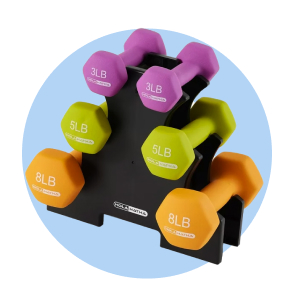
Bounce Back Better: Turning Today’s Challenges into Tomorrow’s Wins
Solving setbacks for success
When you run a small business, the stakes can feel incredibly high. You give so much of yourself to set up a business, and wear so many hats to keep it running. It’s not hard to take every setback personally.
The fact is, though, they’re bound to happen. Some are so common that almost every entrepreneur has experienced them.
What makes the difference between a setback that could capsize your business and one that you can easily bounce back from? The answer may simply be your state of mind. Here’s how to turn those challenges into opportunities.

How common are setbacks?
Around 50% of all businesses fail within five years, and the percentage of companies that last a decade or more is around 35%. This data indicates that small businesses encounter numerous challenges and setbacks, and although many fail to recover, there are ways to bounce back.

How to address the most common challenges
There are seemingly limitless numbers of setbacks a small business owner may face, but some of them are more common than others. Here are the most common challenges you may face and tips for how to overcome them.
Employee turnover
Your team is the bedrock of your organization. You hired them, you trained them and you trust them to help you keep your business afloat. Unfortunately, they can also be a source of setbacks.
According to Nectar, 46% of employees surveyed plan to look for another job. The most common reasons employees quit their jobs are seeking a greater challenge, looking for a higher salary, feeling uninspired, or wanting to feel more valued. To combat these motivations, you need to get strategic about employee retention.
Career development
Start by working one-on-one with your employees to determine their career trajectories and development opportunities. Employees seeking a greater challenge at work may be ready to take on more responsibility. This is a great opportunity for you to help them develop new skills and also delegate some tasks that might be taking up too much of your time.
Employees who are feeling uninspired may also benefit from being given new tasks to complete. They don’t have to be large tasks. Simply changing up a team member’s daily routine may be enough to help them get their groove back.
Employee satisfaction
Second, considering that happy employees can be up to 13% more productive than unhappy ones, it’s worth addressing the causes of employee discontent. Job insecurity is a source of stress for more than half of workers, according to the American Psychological Association. To help workers feel more secure in their roles, consider additional training or upskilling. You can also simply offer encouragement to help them feel valued.
Salary
As for salary, keep an eye on statistics for equivalent jobs in your industry. Especially those in your local area. If you’re not able to keep your salaries competitive, explain why and try to offer other benefits.

Slow sales periods
Whatever business you’re in, there are bound to be slow periods. In retail, that slow period is usually the first of the year, right after the holidays. Whereas in the travel industry, Fall (a busy period for retail) is typically the slowest. Even with the best product or service, it can be hard to gain sales traction during a seasonal slump.
That doesn’t mean there aren’t tricks you can try, though. The key is to be flexible and try new things. If what you were already doing was working, you wouldn’t need to change. So keeping an open mind about new ideas and techniques can be a big help.
Increase your marketing
The first thing to consider is increasing your marketing. Expand your social media presence, offer a newsletter, or create seasonal promotions to boost foot traffic. When the season turns and fewer people are walking through your door, you need to go where they are to bring them back.
Expand your product line
If you’re struggling for customers during a specific season, it may be because what you offer simply isn’t in demand at that time of year. Consider offering complimentary products that will be in demand.
If your business is a coffee shop, adding iced beverages to your menu during the summer months might boost sales. If you run a hardware store, consider offering vacation supplies or holiday decorations to bring in customers during off months.
Whatever your business, there is likely a product you can offer during your slow period that will encourage people to buy. You can also pair expanded product offerings with seasonal sales on products that are in less demand.
Seasonal sales
When a slow period hits, consider boosting traffic with a seasonal sale. Promote your event through social media and online channels to make it feel like an experience customers won’t want to miss. Tap into the emotional aspect of the change in seasons to draw in the crowd.
You can also partner with other local businesses to make your sale more of an event. Consider advertising on your local community’s calendar or social media page. The more “noise” you can make about your sale, the better a chance you have of attracting customers.
Generating new business
Generating new business can be a challenge, no matter the size of your organization. Taking a hard look at your sales tools and processes to ensure they align with your marketing and overall business objectives can have a big impact.
Consider a digital transformation
Digital transformation involves retooling your organization to use digital tools and processes instead of paper or analogue solutions. It may involve a capital outlay, but it can save you significant time and money in the long run.
The reality of the digital age is that customers will expect you to embrace digital tools as much as they have. Smart POS systems and email receipts are just the tip of the iceberg. If you’re able to offer online scheduling and payment systems so that customers can engage with your business using their devices, you may see an influx of new business.
Analyze your sales data
Start by analyzing your sales data. Make sure that the information recorded in your CRM is accurate and reflects the realities of the businesses you deal with. If you’ve got the number of employees a prospect has, or are targeting the wrong person at their organization, you might not be getting the results you want.
Align your marketing with sales
If your business is large enough to have different teams working on marketing and sales, be sure they’re closely aligned. If the marketing team provides the sales team with leads that are unusable, or if the sales team misrepresents the products you offer, neither team will be operating at its full potential. Regular meetings can ensure they speak the same language.
If you don’t have separate teams working on marketing and sales (or it’s just you), be sure to use the same language when you’re making a sales call as you do on your social media or other marketing channels. A unified message will help build brand trust.
Let Walmart Business help your business
We have the tools and features to help you keep your business running smoothly. With a free Walmart Business account, you have access to an ever-expanding assortment of business items. Plus, you can subscribe to automatic deliveries to keep supplies coming on schedule.1 And with multiple users, you can delegate ordering to make your job easier.
Already have an account? Join Walmart Business+ to save over $500/year and enjoy exclusive rewards for your organization.2 Plus enjoy features such as free shipping with no minimum purchase,3 free delivery from a store4 and 2% in rewards on Walmart Business purchases.5


Limited-time offer
Unlock your special promo code
Stay informed on Walmart Business news & get $20 off a $100 purchase!1
1Minimum order of $100. Promo code can be used one time & may not be combined with other offers. Offer not transferable & void where prohibited by law. Customer responsible for all applicable taxes. Offer expires 12/31/2025 at 11:59pm PT. Further restrictions apply. See terms at checkout for details. Promo code offers available in limited quantities. While supplies last.
1 Shipping, delivery and minimum order fees may apply. Eligible items only. Terms apply.
2 Savings based on 1 free delivery $35+ order vs. $9.95 fee and 1 free shipping order under $35 vs. $6.99 fee biweekly, plus 2% Walmart Business rewards on monthly order >$250 (average value of $400).
3 Excludes most marketplace items. Freight & location surcharges may apply.
4 $35 minimum. Restrictions apply.
5 Earn 2% in Walmart Business Rewards on orders $250 or more. Exclusions apply. See full terms.
6 Rewards can only be used toward future purchases on Walmart Business. Additional terms apply.
Exciting news awaits
Hear firsthand about new products, features & promotions.
By clicking submit, you agree to receive emails about Walmart Business and acknowledge you have read and agreed to our Terms of use and Privacy Policy.











